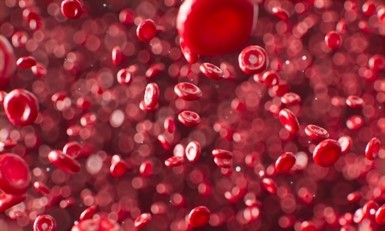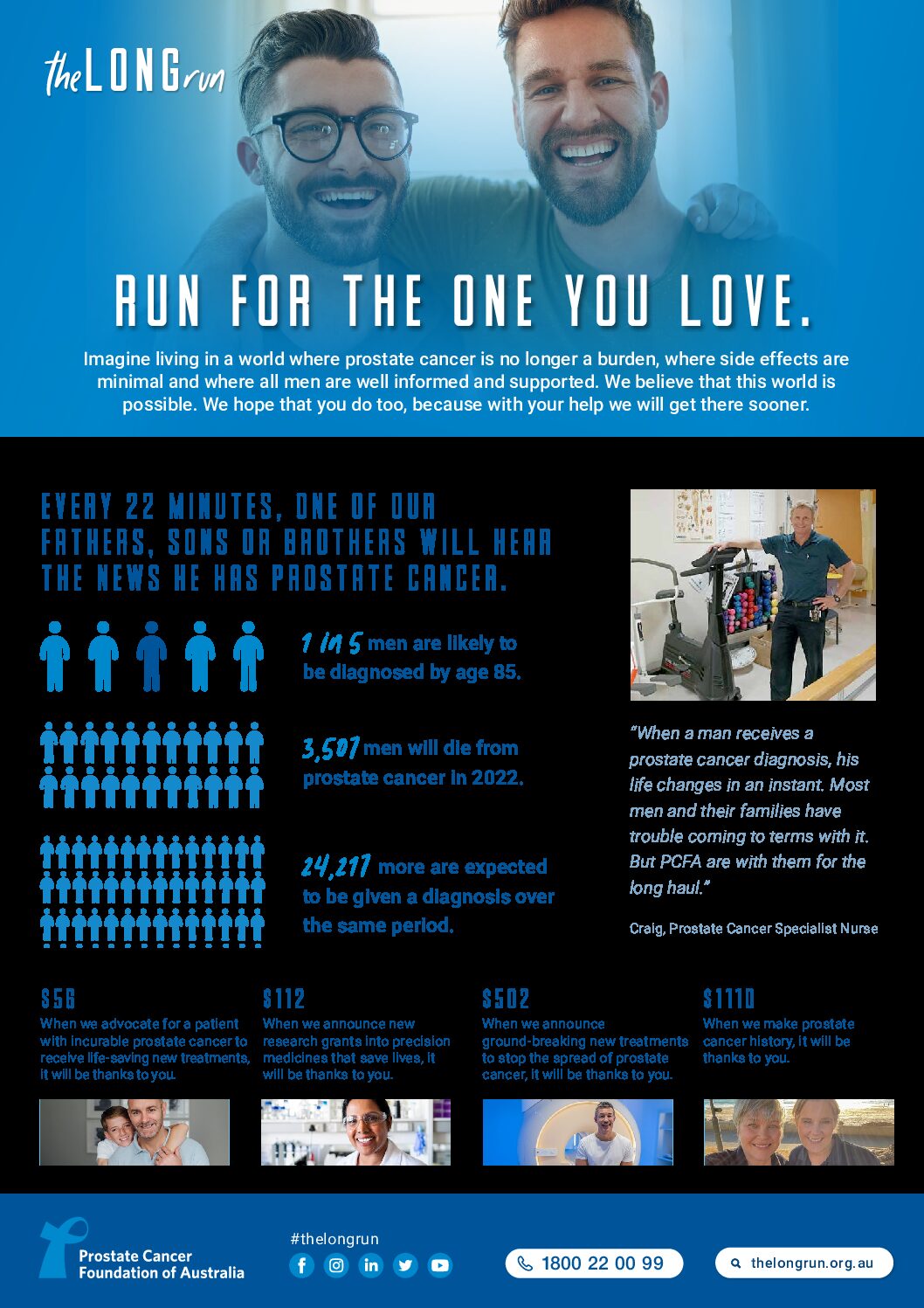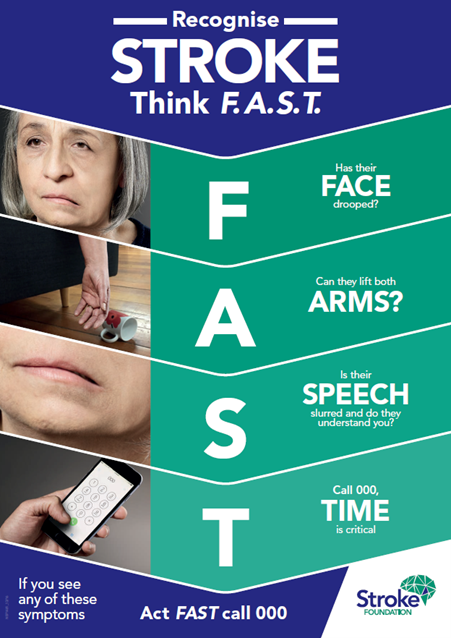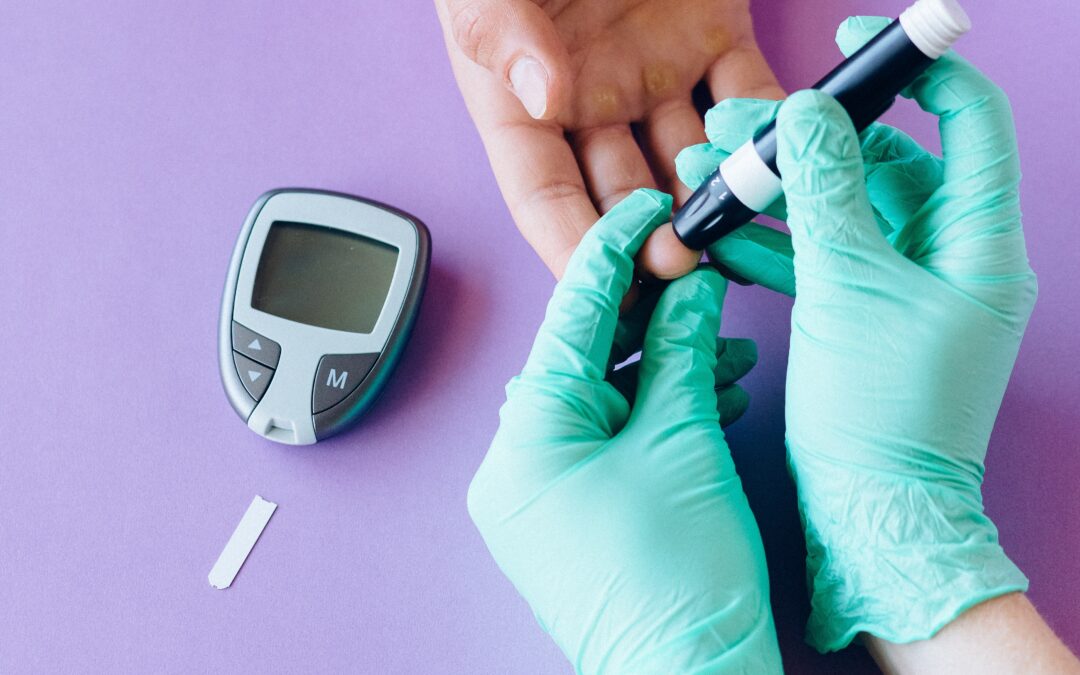
by Belinda | Aug 30, 2022 | Health Assessments, Uncategorised
September is Blood Cancer awareness month. An important time of the year as it raises awareness and understanding of blood cancers. It aims to support patients affected by blood cancer, spread awareness and to raise fund to progress research in blood cancer.
Blood cancers combined, are the second most diagnosed cancers in Australia and claims the lives of more than 5,600 people each year. It also continues to remain the most commonly diagnosed childhood cancer.
There are three main groups of blood cancer — leukemia, lymphoma, and myeloma.
Leukemia – This is the general name given to a group of cancers that develop in the bone marrow and result in high numbers of abnormal blood cells.
Lymphoma – a type of cancer that develops in the lymphatic system. This is when abnormal white blood cells grow. (The lymphatic system is the part of the body’s germ-fighting network.)
Myeloma – a cancer of the blood’s plasma cells, a type of white blood cell that is made in the bone marrow.
Blood Cancer Signs and Symptoms
- Unexplained weight loss
- Unexplained bruising or bleeding
- Lumos of swellings
- Shortness of breath
- Drenching night sweats
- Repeat or severe infections
- Regular and frequent fevers
- Unexplained rash or itchy skin
- Pain in your bones, joints or abdomen
- Fatigue
- Unusually pale complexion
Fundraising is one of the ways that you can help make a significant difference in the lives of patients and their families. To donate, click here – https://www.lymphoma.org.au/donate/

by Belinda | Aug 30, 2022 | Health Assessments, Uncategorised
September is Prostate Cancer Awareness Month. The Prostate Cancer Foundation of Australia aims to raise public awareness about prostate health and prostate cancer.
Prostate Cancer is the most diagnosed cancer in Australian men. It mainly affects men over the age of 50, and the risk increases as you get older. (Being under 50, your risk is lower, but it is still possible.)
Compared with other cancers, prostate cancer has one of the highest five-year survival rates (95%) if it is diagnosed early. (Source: Cancer.org.au)
Symptoms
Whilst in the early stages of prostate cancer, there may not be any signs or symptoms. Symptoms during the later stages include:
- Trouble or pain while urinating
- Frequent urination
- Decreased force (weak stream) of urination
- Difficulty starting or stopping urine stream
- Blood in the urine or semen
- Pain or discomfort in the pelvic area or back
- Bone Pain
- Weakness or numbness in the legs or feet
- Tiredness, shortness of breath, dizziness, fast heartbeat or pale skin.
Causes
There are some factors that can increase your risk of prostate cancer.
- Age – your risk increases over the age of 50
- Family history of prostate, breast or ovarian cancer
- A direct male relative, (father/brother) diagnosed with prostate cancer before the age of 60.
This September, help increase the awareness of prostate cancer and support Australian men with prostate cancer and their families, by donating here – https://www.prostate.org.au/donate/

by Belinda | Jul 25, 2022 | Health Assessments
8 – 14th August 2022
In light of National Stroke Week, we thought we’d help simplify for you what strokes are, the warning signs, the effects of a stroke and preventative measures.
“Stroke is one of Australia’s biggest killers and a leading cause of disability, but more than 80% of strokes can be prevented.” (Source: Stroke Foundation)
What is a stroke?
A stroke occurs when the supply of blood to the brain is reduced or blocked completely, which prevents brain tissue from getting oxygen and nutrients. As a result, the brain cells die due to lack of oxygen and nutrients.
There are three types of strokes.
Ischaemic Stroke:
An Ischemic stroke occurs when a blockage cuts off the blood supply to the brain. This can be caused by a blood clot or plaque.
Haemorrhagic Stroke:
A haemorrhagic stroke occurs when a weakened vessel ruptures, causing blood to leak into the brain. This stops the delivery of oxygen and nutrients.
Transient Ischemic Attack (TIA) :
A TIA is also called a warning or ministroke. A transient ischaemic attack occurs when the blood supply to your brain is blocked temporarily. The blockage clears and blood supply to the brain starts again, and the signs of a stroke disappear. TIAs should never be ignored, and you should always call 000 even if symptoms subside as this can be an indication of a larger stroke to come.
How do you know if someone is having a stroke?
The Stroke Foundation recommends the F.A.S.T. test. Think F.A.S.T., act FAST
Face: Check their face. Has their mouth drooped?
Arms: Can they lift both arms?
Speech: Is their speech slurred? Do they understand you?
Time: Is critical. If you see any of these signs call 000 straight away.
A stroke is always a medical emergency.
(Source: Stroke Foundation)
The effects of a stroke:
Every stroke is different. The effects depend on the type of stroke, location of the blocked or burst artery, what part of the brain is damage, etc.
Some problems people who have a stroke may experience include:
- Paralysis – Weakness on one side of the body
- Movement and sensation impairment
- Cognitive impairment (thinking, reasoning, judgement, memory)
- Speech difficulties and understanding
- Behavioral changes and uncontrollable outbursts of emotion
- Seizures
- Problems reading and writing
- Vision loss
- Incontinence
- Fatigue
- Depression
How can you prevent a stroke from occurring?
More than 80% of strokes can be prevented. So, what can you do to reduce your risk of having a stroke? Whilst we have included some lifestyle recommendations below to reduce your risk, there are some risk factors that you can’t do anything about. These include age, family history, gender or already having a prior stroke.
- Book in regular health assessments
- Stay active with regular physical exercise
- Healthy eating
- Decrease the amount of cholesterol and saturated fats in your diet
- Monitor you blood pressure
- Stop smoking
- Drink alcohol in moderation
“It is predicted that without action; by 2050, the number of first-ever strokes experienced by Australians annually will increase to 50,600 or one stroke every 10 minutes.” (Source: Stroke foundation 2020).
For more information about how we can help you with workplace education or health assessments, get in contact with [email protected] or call 0456 387 569.

by Belinda | Jul 25, 2022 | Drug & Alcohol Testing, Health Assessments
August is the month to focus on our tradies and their health! Tradies National Health month highlights the importance of tradies health and aims to raise awareness of the health risks affecting those who work in the trade industry.
This August, take the time to think about and prioritise your tradies health. Remember, health and safety are the joint responsibility of employers and employees.
According to Safe Work Australia data, tradies have amongst the highest serious injury and disease compensation claims in Australia. “Labourers, technicians, and machinery operators and drivers are among the top four occupations when it comes to number of serious injury claims.” (Source : Tradies in business.)
Trade Industry Statistics
Tradies reported in a survey that:
- 79% take good care of their tools. Only, 47% take good care of their bodies.
- 25% of tradies felt comfortable talking to co-workers about a mental health issue affecting their work, while 53% were open to discussing physical health concerns.
- 69% believed that it is normal to be sore as a result of the work they do
- 42% pushed their bodies past their healthy limits
- 68% follow safe lifting guidelines
- 60% of tradies often have aches and pains as a result of their job
- Less than a quarter of tradies will “warm up” before starting their day of physical activity.
- 2/3rd of tradies agree they would be more inclined to stretch or warm-up before starting work if their employer prioritised it.
- 3 out of 5 serious workplace injuries involve a tradie-despite making up only 35% of the workforce.
(Source : Tradies Health Survey 2019)
Health Risks
Due to the nature of the industry, tradies are at a higher risk of certain health issues.
- Skin cancer due to being exposed to the sun for extended periods of time
- Hearing Loss due
- Musculoskeletal disorders
- Alcohol and drugs
- Exposure to potentially harmful substances
- Occupational dust diseases
- Back issues
- Psychological pressure
- Depression and mental health
- Greater risk of injury from unsafe lifting
- Physical strain on the body and joints
- Poor nutrition
- Insufficient exercise
𝗛𝗼𝘄 𝗰𝗮𝗻 𝘄𝗲 𝗵𝗲𝗹𝗽 𝘆𝗼𝘂?
At WPH&S Vic we offer a range of services that can help your workplace support your tradies.
- Individual Health Assessments: Screening for heart health, diabetes, cholesterol, and body composition to determine a problem before it’s too late.
- Skin Checks
- Audiometry
- Spirometry
- Drug & alcohol testing and education
- Our dietitians can offer education what foods to eat at certain times of the day to fuel your brain, how to maintain a healthy body weight and basic nutrition for health and wellbeing.
- Our physiotherapists can assist with correct lifting techniques in the workplace, stretches and strength exercises to minimise the risk of workplace injury.
- Physiotherapist assessment
- Our psychologists can assist your team with their mental health.
Get in contact with us to help support your tradies – [email protected] or 0456 387 569.
(Source : Australian Physiotherapy Association.)

by Belinda | Jul 12, 2022 | Health Assessments, Workplace Education
“75% of vision impairment in Australia is preventable.” – (ABS 21/03/2022) Yet every 65 minutes an Australian loses part or all their vision.
Get your eyes tested this July!
julEYE is The Eye Foundation’s eye health awareness month that takes place during July each year. julEYE has three core aims:
- To raise community awareness of eye health issues.
- To raise funding for research projects into the causes and cures of vision impairment and blindness.
- To support international development projects whose goals are aligned with those of The Foundation.
(Source: Your Health Link, 2021).
The most common causes of vision loss and blindness in Australia are macular degeneration, cataracts, diabetic retinopathy and glaucoma. Many of these conditions are hereditary and can be identified in regular eye checks. (The RANZCO Eye Foundation – www.vision2020australia.org.au )
How often should you get your eyes checked?
According to Vision Australia (2022), regular eye check-ups are recommended for people without eye diseases or specific risk factors every second year with a registered eye care practitioner (optometrist or ophthalmologist).
You may need to get your eyes tested more regularly if you have a health condition such as diabetes, high blood pressure, history of a stroke, neurological conditions or if you have been diagnosed with an eye condition.
How do I protect my eyes?
Good habits for good eye health.
These are our top tips to maintaining healthy eyesight:
- Get regular eye tests – At least every 2 years. Most serious eye conditions are more easily and successfully treated if diagnosed early.
- Maintain a healthy lifestyle – Diets high in anti-oxidants (such as from green leafy vegetables), Omega 3 fatty acids (such as from fish, linseeds), various vitamins (including Vitamins E and C) and minerals (including Zinc and Selenium) can help prevent or slow progression of macular degeneration in some people. Good eating habits combined with exercise help prevent diabetes, which is a significant cause of vision loss in Australia (Vision Australia – 2022)
- Keep in control of your health issues – blood glucose, blood pressure and cholesterol levels.
- Follow advice if you are under the care of an eye health professional
- Prevent digital eyestrain – Staring at a computer or phone screen for too long can cause: eyestrain, blurry vision, trouble focusing at a distance, dry eyes, headaches, neck, back and shoulder pain. Remember to follow the 20/20/20 rule. According to the American Optometric Association, to prevent digital eye strain you should: look at something 20 feet away for 20 seconds every 20 minutes.
- Find out if you’re at risk of eye diseases – Hereditary, family history, lifestyle factors, etc.
- Wear a hat and sunglasses – Protect your eyes from sun damage and make sure your sunglasses meet Australian Standards (protection from UVA and UVB)
- Wear eye protection – Wearing the proper eye protection will prevent injuries from activities such as DIY and certain sports or in a dangerous environment.
- Don’t smoke – Smoking tobacco is directly linked to age-related macular degeneration and many other eye and health problems.
- Be aware of other health conditions and medications that may affect your eyes.

by Belinda | Jul 11, 2022 | Health Assessments, Workplace Education
This year, the national diabetes week runs from 10 – 16 July 2022. This year, the ‘Heads Up on Diabetes’ campaign, Diabetes Australia will be focusing on challenging diabetes related stigma.
Research conducted by the Australian Centre for Behavioural Research in Diabetes (ACBRD), found that four out of five people living with diabetes have experienced stigma at some point. This National Diabetes Week let’s have a conversation about the real impact diabetes stigma can have on a person’s mental and emotional wellbeing. (Source : Diabetes Australia 2022.)
What is diabetes?
According to the Australian Institute of Health and Welfare (AIHW), diabetes is a chronic condition marked by high levels of glucose in the blood. It is caused either by the inability of the body to produce insulin (a hormone made by the pancreas to control blood glucose levels) or by the body not being able to use insulin effectively, or both.
Glucose, also known as blood sugar, is the main source of energy for our bodies. Your blood glucose levels are normally controlled by a hormone called insulin, which converts glucose into energy. Diabetes occurs when the hormone insulin, which assists in the conversion process, is not produced, or is produced to insufficient amounts by the body. For diabetics, when they eat glucose (such as breads, cereals, fruits and starchy vegetables), it cannot, or it is inadequately converted to energy.
There are 4 types of diabetes:
Type 1 – Also known as juvenile diabetes, auto-immune diabetes.
Type 1 diabetes is an autoimmune disease. The immune system is activated to destroy the pancreatic cells, where insulin is produced. It’s unknown what triggers this destruction.
Type 2 – This occurs when the pancreas loses the capacity to produce enough insulin and the body’s cells respond poorly or become resistant to insulin. They then take in less sugar which causes glucose to build up in the blood.
Type 3 – Gestational diabetes – Potentially reversable
Gestational diabetes occurs during pregnancy but may resolve after the baby is delivered.
Type 4 – Pre-diabetes – Potentially reversable.
This is when the blood glucose levels are higher than normal, but not high enough for a diabetes diagnosis.
Symptoms
- Increased thirst
- Frequent urination
- Increased hunger
- Unexplained weight loss, despite normal eating habits.
- Fatigue
- Blurred vision
- Slow healing sores
- Numbness or tingling in the hands or feet
- Frequent and/or recurring infections
- Feeling dizzy
- Itchy skin
Risk Factors
Type 1
- Family history
- Environmental Factors
- The presence of damaging immune system cells (autoantibodies)
- Geography
Type 2
- Being overweight or obese
- Fat distribution. Storing fat mainly in your abdomen
- Physical Inactivity
- Family history.
- Race and ethnicity.
- Abnormal Blood lipid levels. (Low levels of HDL cholesterol and high levels of triglycerides)
- Prediabetes
- Pregnancy-related risks. (Gestational diabetes)
- Polycystic ovary syndrome.
- Areas of darkened skin, usually in the armpits and neck. This condition often indicates insulin resistance.
(Source : Mayo clinic)
When left untreated, diabetes can lead to:
- Heart disease
- Stroke
- Kidney disease
- Nerve damage
- Vision problems – Blindness, eye damage
- Limb amputation
- Depression
- Anxiety
- Digestion problems
- Skin conditions
- Infection
- Dental problems
Prevention
Simple lifestyle measures (below) have been shown to be effective in preventing or delaying the onset of type 2 diabetes.
- Maintain a healthy weight
- Be physically active. (At least 30 minutes of regular, moderate-intensity activity on most days. More activity is required for weight control).
- Eat a healthy diet. (Avoid sugar and saturated fats.)
- Avoid smoking.
- Manage blood pressure and cholesterol levels
(Source : WHO. Int.)





